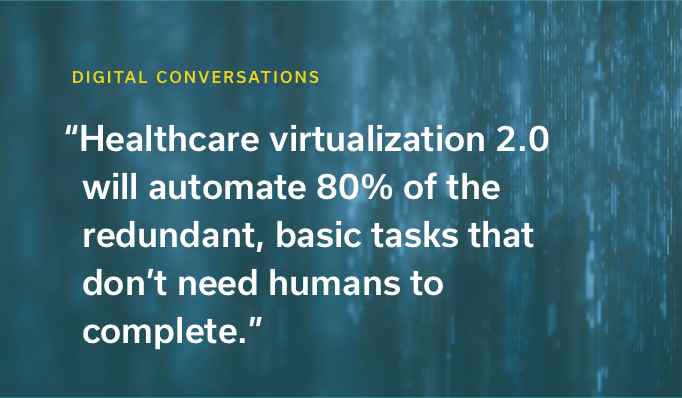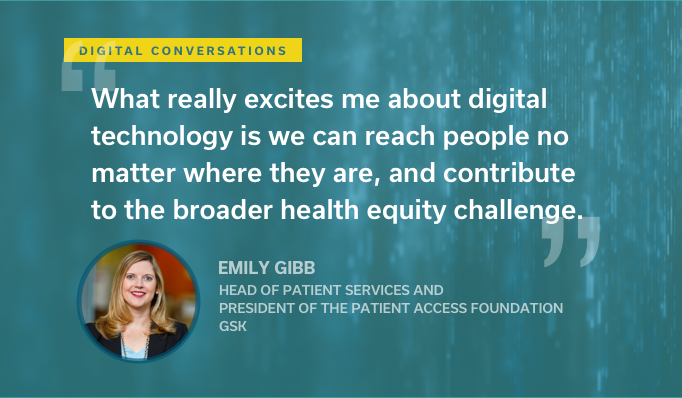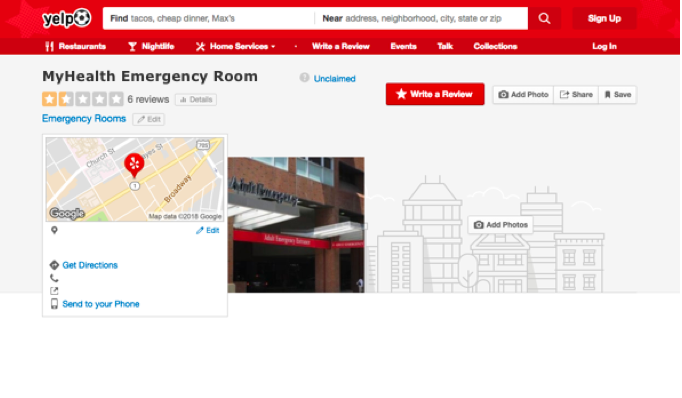Greg Kefer: (00:08)
Welcome to Digital Conversations. I'm Greg Kefer and I'm joined again by Justin Mardjuki. Justin, good to see you on a screen again.
Justin Mardjuki: (00:19)
Thanks Greg. Yep. Recording this one from my bedroom closet.
Greg Kefer: (00:23)
Yes. So you should have good soundproofing by all the clothes that are hanging on the wall behind you there. So Justin, we pay a lot of attention to the healthcare technology market and virtual care. And with COVID that whole world is kind of flipped upside down, right? I mean, when we were talking in February and January of this year, we had this kind of march of consumerism and patient engagement, and there's lots of technology that's being thrown out there, and then COVID hit and everything kind of flipped upside down and went into lightspeed, I guess is a fair assumption, right?
Justin Mardjuki: (00:58)
Yeah. I think COVID has been a time warp for healthcare. Certain things feel like they take forever and a lot of other things have flipped overnight.
Greg Kefer: (01:06)
Yeah. I mean, I was on the phone with a VP of Innovation, Rob Neff, Jefferson University on a recent podcast on Digital Conversations I might add, and he was talking about how they were in a place where they had to innovate in order just to meet incredible demand during that early, early phase, as people were racing to hospitals because they had thought they had COVID, and screeners were the thing back in March. But it's gone a long way past that since those early days of COVID, right?
Justin Mardjuki: (01:34)
Totally. I think at the beginning of COVID everyone had questions about where to get tested, whether or not they had it, how to get screened. And now as COVID is something that we're learning to live with, that same urgency is moving to all kinds of other places in healthcare, whether it's how you get ready for your appointments, or how you follow up with referrals, or how you participate in clinical trials. It's hitting every dimension in healthcare now.
Greg Kefer: (01:56)
Yeah. I mean, I think in the end it's going to come out at a better place than it was when it went in because the industry had to innovate faster, but, you know, gosh, I mean, look at the telemedicine space. I mean, that's incredible. There's just enormous amounts of money and IPOs going on all over the place there.
Justin Mardjuki: (02:13)
Yeah. You know, the telemedicine industry isn't new, but I've been shocked to see how many visits there have been since the beginning of COVID. I mean, every patient wants telemedicine these days, but the insurers are saying their telehealth claims are up 83 times year over year from April of this year, compared to April of last year. That's an insane percentage.
Greg Kefer: (02:36)
Wait, 83X! Can you do the math on that? And tell me how many thousands of percent that is.
Justin Mardjuki: (02:41)
Yeah, yeah. Not 83% up, but 83X. The other crazy piece is, a lot of those are new patients using telehealth for the first time. 75% of all of those encounters were new patients that had never used telemedicine before. So talk about forcing functions and getting people over the hump to an experience that I think a lot of them will never come back to.
Greg Kefer: (03:05)
Sure. Right. I mean, think of the zoom generation that's being created as a part of COVID. You know, we're all working on-screen. So why couldn't we have a consult with a doctor? I actually recently had my first telehealth visit. It was a follow-up to a physical that I had to review labs and things like that. And it was interesting. I thought the interaction with the physician was good. I could totally follow. And it saved me a trip down to the doctor. I don't think it was at all worse. I have to say getting to that appointment was a real hassle though. It was not easy. And it does make me think about friction and scale as these systems roll this solution out, how much they're taking that into account, because the ask for me, and I know what I'm kind of doing with technology, was pretty high. I had to download an app and I couldn't access it until I got a secondary link. And it was really, really clunky. And the whole time, as I'm there, trying to get ready for this thing, I'm thinking there's no way my mom or one of my kids would go through this to be on this call. So what do you do, right?
Justin Mardjuki: (04:10)
Yeah. You know, if you're building telemedicine for the 1% of patients that are most digitally savvy pre-COVID, maybe you could get away with something like that. But if all of your patients are getting care that way now that's just not acceptable anymore. And I think it's telling that a lot of hospitals ditched their old telemedicine systems and actually were doing their visits on zoom or Microsoft teams instead of going with their telemedicine provider, because that was the easiest thing they could get in front of their patients quickly. So it's, it's been fascinating to watch the space.
Greg Kefer: (04:42)
Yeah. And now I think it's worth noting that hospitals are going to come out of this in a very precarious financial position. You know, a stat that I read two months ago from the American Hospital Association, estimated that the hospital industry in the USA at large is going to lose somewhere in the neighborhood of $300, $400 billion because of COVID. And that's largely because people aren't going to see their physicians. They're deferring care. They're not going to the ERs. That's really going to put a lot of pressure on these organizations to rethink. And I suspect it's not just telemedicine as a solution for that. Don't you think?
Justin Mardjuki: (05:24)
Yeah. I'm sure you also saw the news about Teladoc acquiring Livongo for $18.5 billion. And you think about the play Livongo is making to make managed diabetes care accessible out of the hospital, virtual, remote, easy for patients, and they're just getting started. And you think of how a hospital system that makes the patient come to the system, to the clinic to get care is such a worse experience compared to something that Livongo can provide. So hospitals are in this window now where their patients' eyes are open to virtual care, the hospitals themselves have to innovate. You know, it's not a nice-to-have now, it's a necessity. And I'm really curious what types of value-based business models end up coming out of this, because I think that's where the world's going.
Greg Kefer: (06:15)
Yup. Yup. I couldn't agree with you more. It's interesting though, because one of the things that struck me on my telehealth visit was there was no dimension of scale, you know, and when you think of technology, a lot of it is to make things more efficient. You and I were joking about this a little while ago, but I think back to when e-commerce first came on the scene, you know, I can't imagine logging onto a zoom call to some checker at Walmart and ordering up a new fishing pole and some fishing gear, and then having them wrap it up in a UPS and sending it to me, right? I mean this whole humanless dimension where all of the workflows around the actual visit or consultation with a nurse or a physician has to be part of the solution, I think.
Justin Mardjuki: (07:05)
Yeah. I think the first thing telemedicine got right is making it easier for patients. I can now see my PCP in my calendar and it's just between meetings and I didn't have to take off a half day to go in to the hospital and see the doctor in clinic. So I think virtual visits got that piece right. But the next evolution of this is how to make the doctors' jobs easier and how to make the patient access agent's job easier. A video visit is not, like you're saying, it doesn't take any less time than a normal visit in person. And I think 2.0 will be about how to add scale to those teams and automate what you don't need a human to decide, to chatbots or any type of other automated process.
Greg Kefer: (07:48)
Yeah. I think part of the challenge, and this is one of the things that healthcare has struggled with for gosh, a decade plus, is that if you're going to virtualize care, it's one thing to put a doctor on a video and connect it with a patient, but really it's more about how do you get patients to embrace a technology so that they're doing more than just the video visits? And I'm talking about things like scheduling appointments or, you know, doing adherence programs for follow-up visits, or prescription medicine, or enrollment in clinical trials, all of these different things that are somewhat administrative, but also have a clinical dimension that doesn't work unless lots and lots of people embrace the technology. And I just think that healthcare has overlooked what I refer to as friction -- the art of getting somebody to use your product and know how to use it without passwords and downloads and clumsy menus. And when you hear statements like "healthcare must be more consumer-centric", which is still bantered about, it's kind of coming back now that we're used to living with COVID. I think that's part of it, right? I mean, a lot of people know how to order something on Amazon and yet not a lot of people know how to schedule an appointment on a mobile app from a hospital, if they even have the mobile app.
Justin Mardjuki: (09:07)
Yeah. If you're a healthcare nerd like me, and you subscribe to the National Association of Healthcare Access Management...
Greg Kefer: (09:14)
Ha, ha. What's that acronym?
Justin Mardjuki: (09:16)
NAHAM. So if you're in the know, this organization looks at all of those tasks that the people around a doctor help a patient with: intake, consent, getting ready for the visit, taking a picture of your insurance card, all of that stuff, all the hoops you have to jump through. And if you look at that list, you know, down to the minutes that a agent is spending every day on those tasks, 80% of them are things that you could totally do in an Amazon style way. You make it really easy for patients to do themselves on their own time, not cramping up and stressing in the waiting room at the clinic, but in the week leading up to the visit and they can do it a little bit at a time on their phone, or on their computer, or on their iPad. And that's the opportunity that's ahead of us. Video visits got us through the first wave of COVID, and now it's up to hospital systems to take those learnings and get those efficiencies all around the video visit: before, after, follow up, et cetera.
Greg Kefer: (10:15)
Right, if I take a page out of the name of our podcast, Digital Conversations, when you think of what it takes to address, support some of the things you just rattled off there, you know, that's an expensive human agent. And if 80% of that workload could be offloaded to a virtual assistant, a chatbot, boy, there's a lot of money to be saved there. And I think when you look at the healthcare industry at large, and it's not necessarily just hospitals, I think of all the clinical research, there's a lot of that going on with this whole COVID. How do you do a trial in the era of COVID? But you can't hire yourself out of this problem. This financial hole isn't something that, when we're behind COVID, maybe there's a cure or a vaccine, and let's get back to business as usual that we're going to go out and hire a thousand agents to get everybody back to doing healthcare the old way There's going to be a new way. A new normal that I think is all about digitizing those engagements and leveraging data in an EHR so that the experience is clinically relevant. It might reach in and have patient information as part of that engagement. This idea that you and I have talked about before, about operational precision, you would think of putting a patient on an adherence program or plan of some sort, that the bot or mobile assistant could remind them to take the pill or drink a glass of water precisely at 6:02PM every other day, is something that is right up the alley of a digital virtual assistant.
Justin Mardjuki: (11:45)
Yeah, I think that's exactly right. You equip patients so that they can navigate the system themselves. And that's how healthcare is going to claw back out of this $300 billion hole that COVID has caused for them.
Greg Kefer: (11:58)
You have the benefit of being on the front lines of a lot of virtual care engagements with mobile technology. Maybe you could walk us through an example of one of these old human-centric workflows that could be virtualized, which makes it a win for both the patient and the provider.
Justin Mardjuki: (12:16)
Yeah. I mean, you think about the early days of COVID when everybody was scrambling to find testing and hospital systems were totally swamped... Their call centers aren't used to dealing with thousands of inbound inquiries for lab testing and every hospital system around the country had these big phone line operations running 24x7. That's a great workflow to tackle with a digital assistant that's integrated with the backend system to schedule a test for the patient, screen them for COVID, get them into the lab queue. And not only have you saved that patient 45 minutes of busy tones and hold tones, and just the pain of trying to get a test, but you've also saved the system 15, 20, 30 minutes in coordination costs. And that's a beautiful win-win that you can just replicate over and over again, dozens of places in healthcare, right?
Greg Kefer: (13:10)
Right. And there's a dimension there where the EMR, the backend system of record, the CRM, whatever, that's part of this solution, right? It's not that this assistant sits on an island, but it's really reaching in and grabbing information that it might need to help that patient, and that it's putting the information it collects back into the system. So in many ways it's improving the investments they made in that original system of record in a way that that thing was never designed to do in the first place.
Justin Mardjuki: (13:42)
That's right. It's a fully virtual agent that can carry out the full workflow from end to end, from accessing data in that backend system, interfacing with the patient, and writing whatever data that you need about the test that was scheduled, or the order that was placed, back into that system of record.
Greg Kefer: (14:00)
Right. And it might even schedule a telehealth visit with the provider through some cool Google Livongo Teladoc solution, right?
Justin Mardjuki: (14:10)
That's right.
Greg Kefer: (14:11)
Okay. Well, we'll see how it all evolves, but I guess the bottom line is there's a lot of money being poured into virtual health. So I think the industry is going to go through some sort of a virtual moment here that's going to unfold in the next, I don't know, one, two, five years, right?
Justin Mardjuki: (14:28)
It's less than that.
Greg Kefer: (14:29)
Yeah. You're probably right. Yep. You're probably right. Okay, Justin, thanks for coming on the show. This has been Digital Conversations. Thanks for listening to Digital Conversations. If you liked our show, you can always subscribe on iTunes and feel free to like retweet and share on your social networks. This and other episodes are available on iTunes, Spotify and Linkedin.com. We'll be conversing again soon with a new episode so long.






